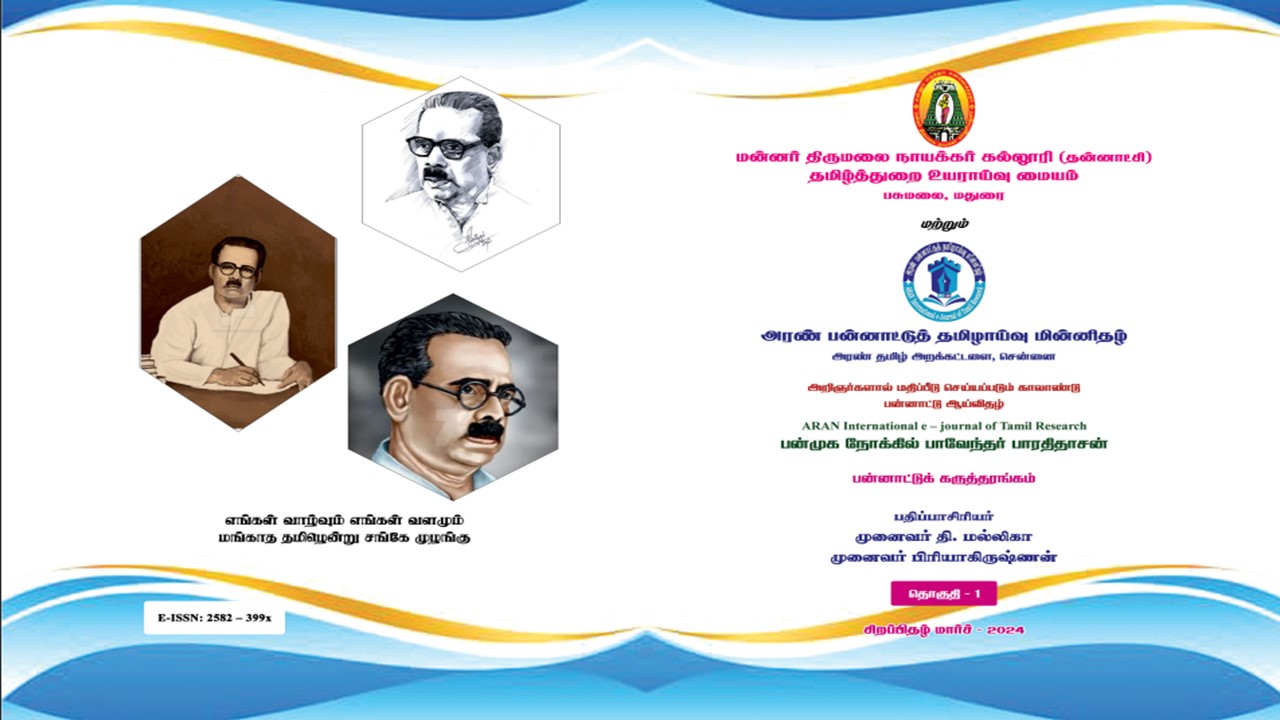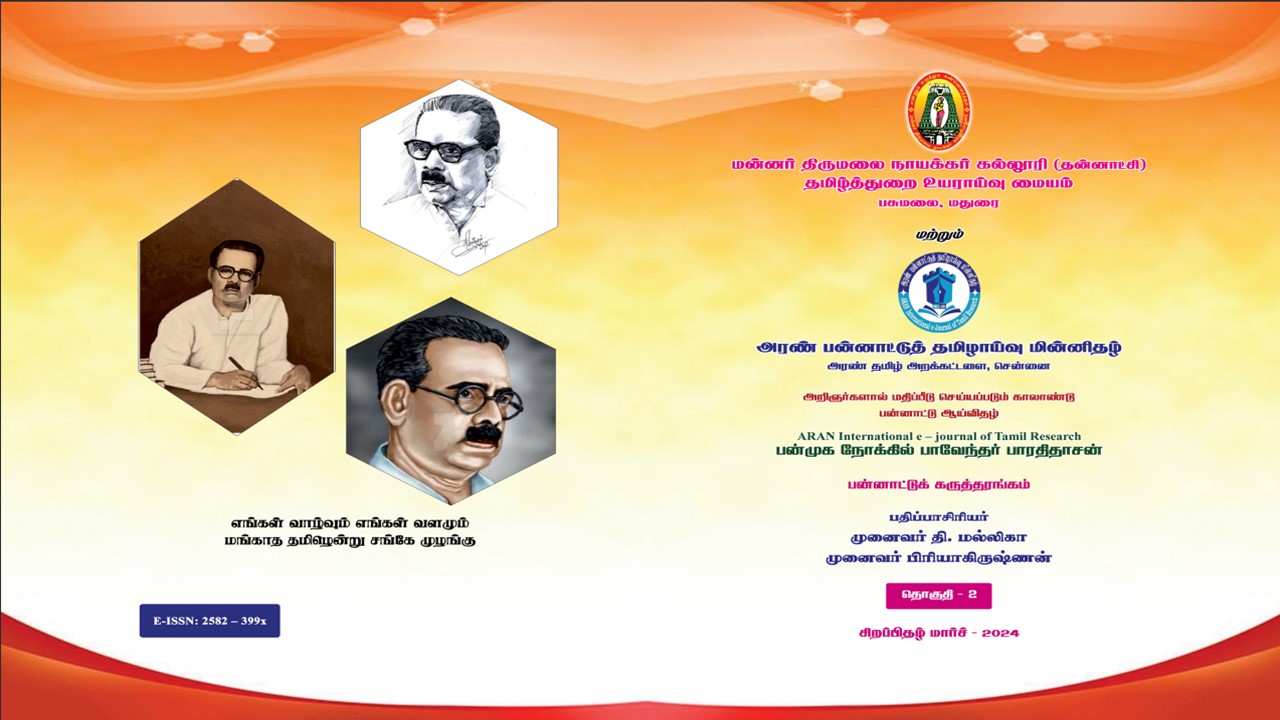AN ANALYSIS OF THE BASIC PRINCIPLES AND CHARACTERISTICS OF GST IN INDIA
Mr.K.Ananthasuresh
Research Scholar (Part-Time)
Dr.MGR Educational and Research Institute
Maduravoyal, Chennai – 600095
Guide:
Dr.A.Devendran
Associate Professor, Faculty of Management Studies,
Dr.MGR Educational and Research Institute
Maduravoyal, Chennai – 600095
ABSTRACT:
This paper provides an outline of the key concepts and characteristics of GST in India. GST is one of the major indirect tax changes since the freedom of Indian. GST is the only indirect tax impacting all industries and parts of our economy. Ignorance of law is no justification nor is subject to panel rules, so why not start practicing GST to reduce ignorance costs. Therefore, we will all know this whether voluntarily or as a necessity. The aim of the Goods and Services Tax (GST) is to establish a new, uniform market that serves all business and economic interests. The altered GST-Goods indirect tax framework and service tax were expected to be implemented in India. This tax reform was adopted by many countries led by France, which became the first nation to adopt GST. It is expected to eliminate the pressure of current indirect taxation structure and play a significant role in India's development. GST contains all indirect taxes that lead to economic development and are more efficient than the existing tax regime. GST would also help pace the country's total Gross Domestic Product (GDP). GST simplifies the tax system and assists in the growth of the regional general sector. It is expected that the implementation of GST would similarly impact all sectors of the economy.
Keywords: GST, CGST, VAT, SGST
INTRODUCTION:
India is federal country where the authority to levy tax is derived from the Constitution of India which allocates the power to levy various taxes between Central and State Governments.
Previously we pay two types of Tax 1. Direct Tax 2. Indirect Tax. Direct Tax paid directly to the government by the taxpayer i.e. Income Tax, Wealth Tax, and Corporation Tax. Indirect Tax is a tax levied on goods and services rather than on income or profits. It is not directly paid to government but collected from intermediaries (such as retail stores) from the person who bears the ultimate economic burden of the tax (such as consumers). The intermediary later files a tax return and forwards the tax proceeds to government with the return for example Sales Tax, VAT, Excise Duty, and Custom Duty and so on. GST is a single, destination based indirect tax. It is levied on value added to goods as well as services at each stage of the supply chain. The main objective behind levying such a tax is to consolidate multiple indirect tax levies into a single tax. Thus, GST subsumes a host of taxes. It overcomes limitations of the previous indirect tax structure. Furthermore, it brings efficiency in the administration of tax. The genesis of the introduction of GST in the country was laid down in the historic Budget Speech of 28th February 2006, wherein the then Finance Minister laid down 1st April, 2010 as the date for the introduction of GST in the country. Thereafter, there has been a constant endeavor for the introduction of the GST in the country whose culmination has been the introduction of the Constitution (122nd Amendment) Bill in December, 2014. GST is proposed to be a dual levy where the Central Government will levy and collect Central GST (CGST) and the State will levy and collect State GST (SGST) on intra-state supply of goods or services. The Centre will also levy and collect Integrated GST (IGST) on inter-state supply of goods or services. Thus GST is a unifier that is going to integrate various taxes being levied by the Centre and the State at present and provide a platform for forging an economic union of the country. This tax reform will lead to creation of a single national market, common tax base and common tax laws for the Centre and States. Another very significant feature of GST will be that input tax credit will be available at every stage of supply for the tax paid at the earlier stage of supply. This feature would mitigate cascading or double taxation in a major way. This tax reform will be supported by extensive use of Information Technology [through Goods and Services Tax Network (GSTN)], which will lead to greater transparency in tax burden, accountability of the tax administrations of the Centre and the States and also improve compliance levels at reduced cost of compliance for taxpayers. Studies indicate that introduction of GST would instantly spur economic growth and can potentially lead to additional GDP growth in the range of 1% to 2%.
NEED OF THE STUDY:
This analysis will help us GST's effect after implementation, it will show the basic principles of GST, and the research will also show advantages that GST will pose after implementation.
OBJECTIVES OF GST:
- To create a common market across the country.
- To simplify tax administration and compliance.
- To minimise cascading effect on taxation.
- To reduce tax evasion and corruption.
- To reduce economic distortions.
RESEARCH METHODOLOGY:
The paper is descriptive in nature based on secondary data collected from various journals, articles, newspapers, magazines and websites as well as conceptual understanding.
PRINCIPLES OF GST:
To elucidate the above definition, we can say that GST is based on two principles: ‘Destination Principle’ and ‘Value Added Principle.
‘Destination Principle’ states that the supply of goods and services would be taxed at the point of consumption. This means that GST replaces source based tax system with destination based tax regime.
‘Value Added Principle’ on the other hand underlines that the tax shall be collected on value-added to goods or services at each stage of the supply chain. Right from the original producer or service provider to the ultimate consumer, GST will be collected on value added at every stage of the supply chain.
Furthermore, GST paid on the purchase of goods and services can be set off against the output tax payable on the supply of goods and services. Thus, GST provides for comprehensive and continuous tax throughout the supply chain. It does away with the cascading effect of taxes.
Just like the state level Value Added Tax (VAT) levied on sale of inter-state goods, GST is a national level tax that incorporates value added principle. Therefore, we can say that GST is a well designed VAT on goods and services. It eliminates the shortcomings such as marginal benefit of input tax credit and multiplicity of taxes that persisted in VAT.
UNDERSTANDING THE CONCEPT OF GST THROUGH AN EXAMPLE:
Say for instance, A, a wholesaler sells the goods to B, a Retailer for Rs 2,00,000 @18% GST. B adds some value to the goods and sells them to the final consumer C for Rs 2,20,000 @ 18% GST.
Now, A collects GST of Rs 36,000 from B on the supply of goods. B on selling goods to C collects GST of Rs 39,600 from C. As we can see, GST is collected at every point of consumption throughout the supply chain, thus submitting to the ‘Destination’ Principle.
Furthermore, B just pays Rs 3,600 to the government towards GST. This is because B claims an input tax credit of Rs 36,000. This is the amount of GST that he paid on the inputs purchased. Such amount is set off against the output tax of Rs 39,600 that he collected from C. Thus, B pays tax on the amount of value added to the goods which is worth Rs 20,000.
PRE-GST TAX STRUCTURE IN INDIA:
Under the previous indirect tax regime, both Centre and States levied and collected taxes on goods and services separately. The tax collected at each level of authority was as per the respective subjects enumerated in the Union and State Lists. In respect of goods, the Centre had powers to levy tax on the manufacture of goods except alcohol for human consumption, narcotics etc. Whereas the State governments had powers to levy tax on the sale of goods. In respect of Services, only the Centre had the power to levy and collect Service Tax.
Hence, Central Excise, Customs and Service Tax were the three main components of indirect taxes for the Central Government. While VAT and Central Sales Tax (CST) were the major taxes for the State Governments along with Octroi, Entertainment Tax etc.
Such multiplicity of taxes gave way to multiple taxable events. In such a scenario, taxes were levied by different authorities on the same subject or transaction. Moreover, taxes paid on input goods could not be set off against the output tax payable on services or vice versa. Also, there was non-availability of set off against other State or Central Government levies. All this resulted in cascading of taxes that ultimately increased the cost of goods.
DUAL GST FRAMEWORK:
India is a federal country, where both Centre and States have powers to levy and collect taxes under respective legislation. Hence, a dual GST model is implemented in India. Under the dual model, the power to levy taxes is distributed between Centre and States. Accordingly there are four components of GST: CGST, SGST, IGST and UTGST.
Central GST (CGST) is levied on intra-state supply of goods and services by the Central Government. It is governed by CGST Act. The State GST (SGST) is levied on the intra-state supply of goods and services by the State Government. It is governed by the SGST Act.
Integrated GST (IGST) is levied on the inter-state supply of goods and services by the Central Government. It is governed by the IGST Act. The term ‘inter-state’ supply also includes 1) imports and exports 2) goods supplied to foreign tourists and 3) goods supplied to or by Special Economic Zones (SEZs).
For instance, ABC Ltd, a manufacturer in Punjab supplies goods to XYZ Ltd, a wholesale dealer in Punjab for INR 2,00,00 @18% GST. XYZ Ltd further supplies these goods to PQR Ltd a retailer in Maharashtra for INR 2,50,000 @18% GST. Finally, PQR Ltd sells the goods at INR 2,70,000 to L, a consumer in Maharashtra. The following graphic depicts the working of dual GST model.
ADVANTAGES OF GST:
GST is undoubtedly one of the biggest tax reforms since India opened its gates to the world economy in 1991. It aims to create a unified market throughout the nation by subsuming multiple taxes and reducing tax compliance. Thus, there are a lot of advantages of GST as an indirect tax. However, there are a number of disadvantages of GST too that make it challenging to implement the tax.
- Upcoming of common national market
- Elimination of cascading effect of taxes as a host of taxes get subsumed
Small traders or service providers exempt from paying tax as threshold for registration increased to Rs 20 Lakhs - Small businesses to benefit from the composition scheme as it eases the compliance burden for them
- Reduced tax compliance as number of tax returns to be filed under GST has come down
- The final price of goods and services to come down as the benefit of the input tax credit gets passed on to the final consumer
HOW GST WORKS:
CONCLUSION:
After independence, GST is the most logical step toward a comprehensive indirect tax reform in our region. GST is leviable in both goods procurement and service delivery as well as in connection with it. All economic industries, whether it is the trade, bank, including Govt. GST continues to affect agencies and the public industry. GST will directly impact all segments of the economy: large, medium, small-scale enterprises, intermediaries, importers, exporters, retailers, specialists, and customers. One of India the Goods and Service Tax (GST)'s largest tax reforms is all ready to merge state economies and fuel overall growth. GST will create a single, united Indian market which will boost the economy. Experts believe GST is likely to increase tax collections and fuel the economic growth of India by breaking fiscal boundaries between states and incorporating India through a uniform rate of tax. Under GST, the tax burden should be split equitably between manufacturers and utilities, by raising the tax base and reducing deductions by a lower tax rate.
References:-
- http://taxmanagementindia.com
- http://www.gstindia.com
- http://gstcouncil.gov.in/about-gst
- https://quickbooks.intuit.com/in/resources/gst-center/gst-in-india/
- https://www.avalara.com/in/en/learn/whitepapers/know-about-gst.html?ef_id=Cj0KCQjwsYb0BRCOARIsAHbLPhEdZuI_xXIjSxBVPcDMajd9Iq8Qyk_39Xdm6Khf4zwSJ6oe-NwjkSoaAoxwEALw_wcB:G:s&s_kwcid=AL!5131!3!420847163216!b!!g!!&lso=Paid%20Digital&lsmr=Paid%20Digital








